Air Gun (AG) — PVC Adjustable-Flow Blow Gun for Industrial Cleaning
Product: Air Gun (AG) — Models JAL-10S, JAL-100S, JAL-200S, JAL-300S
Short description: PVC air gun with adjustable air flow for easy, effective machine cleaning. Available in four nozzle lengths and offered in models JAL-10S, JAL-100S, JAL-200S and JAL-300S.
Introduction
The Air Gun (AG) series is a family of purpose-built industrial blow guns engineered to deliver controlled compressed-air discharge for machine cleaning, dust removal, part drying, and localized blow-off operations. Constructed primarily from engineered PVC for chemical resistance and low weight, and offered in four nozzle length variants (JAL-10S, JAL-100S, JAL-200S and JAL-300S), the AG line targets maintenance shops, production lines, and plant technicians who require ergonomics, flow adjustability, and variety of reach without the cost and weight of metal blow guns.
This article provides a detailed technical overview suitable for procurement, maintenance, and engineering personnel. Topics include mechanical and fluid dynamic design, specifications and dimensions, materials and build quality, performance characteristics, typical use cases, comparative analysis with alternate blow-gun technologies, safety and regulatory considerations, maintenance procedures, and troubleshooting tips.
Technical Overview
The Air Gun (AG) is a manually operated pneumatic blow-off tool. Its core function is to convert compressed-air energy into a controlled burst or continuous stream of air for surface cleaning and particle displacement. The AG series combines a PVC main body with an integrated flow-control mechanism and interchangeable nozzle lengths. The flow control enables operators to adjust discharge volume and velocity for different tasks—ranging from delicate dusting of electronic components to robust clearing of swarf and shavings from machine beds.
Functional Components
- Main body (PVC): Ergonomic pistol-grip housing that contains the valve and flow-control assembly.
- Flow control: Built-in adjustable valve (needle or rotary metering) enabling precise regulation of air discharge; allows partial throttling for fine control or full open for maximum flow.
- Nozzle assemblies: Four nozzle length options to match reach and dispersion requirements: JAL-10S (short), JAL-100S (100 mm), JAL-200S (200 mm), JAL-300S (300 mm).
- Inlet coupling: Standard quick-connect compatible inlet (1/4″ NPT / 1/4″ BSP options available per regional preference), enabling fast connection to plant air lines and universal compatibility with compressor fittings.
- Trigger/actuation: Ergonomically shaped trigger with modulated actuation for comfortable operation during long cleaning cycles; includes a detent for continuous open if required.
Operational Principle
When compressed air is supplied to the inlet, the internal valve geometry directs flow through a calibrated passage. The adjustable metering element changes the effective orifice, altering volumetric flow rate and downstream velocity. Nozzle length and bore diameter influence exit pressure and momentum; shorter nozzles provide higher volumetric flow and momentum for aggressive cleaning, while longer nozzles enable reach into cavities and reduced turbulence at point-of-application.
Applications and Performance Envelope
The AG series is optimized for intermittent and continuous cleaning tasks up to the specified maximum working pressure. Typical applications include:
- Machine tool chip and coolant residue removal
- Conveyor line debris clearing
- Assembly line blow-off and part drying
- Filter cleaning and dust extraction support
- Localized pneumatic testing and leak inspection
Performance is influenced by supply pressure, nozzle length, and the degree of flow throttling set by the operator. The AG is designed to operate reliably within the recommended pressure and temperature ratings specified in the following tables.
Specifications and Dimensions
The table below presents technical specifications for the AG series. Values are representative of factory measurements and typical operating conditions. For precise application design, corroborate with product datasheets and in-house air-system performance data.
| Attribute | JAL-10S | JAL-100S | JAL-200S | JAL-300S |
|---|---|---|---|---|
| Nozzle length (mm) | 10 | 100 | 200 | 300 |
| Overall length (mm) | 135 | 225 | 325 | 425 |
| Weight (g) | 95 | 120 | 145 | 170 |
| Inlet thread | Standard 1/4″ NPT (or 1/4″ BSP on request); quick-connect compatible | |||
| Maximum working pressure | 8.0 bar (116 psi) | |||
| Recommended operating pressure | 4.0–7.0 bar (58–101 psi) for best balance of flow and safety | |||
| Free-air delivery (L/min) @ 6.0 bar | 300 ± 15 | 260 ± 15 | 210 ± 10 | 160 ± 10 |
| Equivalent flow (CFM) @ 6.0 bar | 10.6 | 9.2 | 7.4 | 5.7 |
| Typical sound level @ 6.0 bar | 96 dB(A) | 94 dB(A) | 92 dB(A) | 90 dB(A) |
| Operating temperature range | -10°C to +60°C (14°F to 140°F); avoid prolonged exposure to UV and temperatures >60°C | |||
| Body material | Engineered PVC (polyvinyl chloride) with reinforced internal inserts | |||
| Nozzle material | PVC extension with optional metal tip insert (stainless steel) available for wear resistance | |||
| Sealing elements | Nitrile (Buna-N) or EPDM O-rings (chemical-specific options available) | |||
Notes: Free-air delivery (FAD) values are measured with the gun’s flow control fully open at 6.0 bar supply pressure, with standard nozzle bores. Actual field values will vary with supply line losses, regulator settings, and fittings.
Materials and Build Quality
The AG series was designed with a balance of cost-efficiency, chemical compatibility, and weight considerations. The primary material is engineered PVC formulated for mechanical strength and resistance to a broad range of non-aggressive chemicals typically encountered in industrial plants.
PVC Main Body
PVC is selected for the AG body because it provides:
- Low density: Reduced operator fatigue during extended use compared with heavier metal guns.
- Chemical resistance: Good compatibility with water, many solvents (consult compatibility charts), and non-oxidizing cleaning agents.
- Non-conductivity: Useful in applications where electrical conductivity is a concern (but caution near live circuits is required).
- Cost effectiveness: Lower manufacturing costs while meeting functional durability for industrial cleaning tasks.
Reinforcements and Wear Points
Where PVC would be subject to higher wear or stress—such as the inlet thread and valve seat—reinforced inserts and bushings are used. These inserts are typically glass-filled PVC or metal (stainless steel) where higher mechanical strength or abrasion resistance is required. O-rings and seals are specified as nitrile (Buna-N) for general-purpose use; EPDM or Viton are available as upgrade options for specific chemical compatibility or higher temperature exposure.
Nozzle Options
Nozzle extensions are molded from PVC, with small-bore tips that shape discharge patterns. For high-abrasion environments (e.g., particulate-laden airstreams, metal chips), optional stainless steel tip inserts increase wear life and minimize bore deformation over time. The modular nozzle design allows field replacement to restore performance without replacing the entire gun.
Quality Control and Testing
Each AG unit undergoes factory pressure testing and leak checks. Typical QC steps include burst/overpressure verification at 1.5x maximum working pressure, flow verification at 6.0 bar, and functional lifecycle testing of the trigger and flow control. Dimensional checks ensure nozzle length, bore diameter, and inlet thread conformity to specified tolerances.
Key Features
- Adjustable flow control: Integrated metering device provides precise airflow regulation — from micro-jet to full open blast.
- Four nozzle lengths: JAL-10S, JAL-100S, JAL-200S, JAL-300S — match reach and dispersion for confined or open-area blow-off.
- Ergonomic design: Pistol-grip form factor with modulated trigger reduces operator fatigue and improves control.
- Lightweight PVC construction: Lower weight, corrosion resistance, and reduced cost compared with metal blowguns.
- Modular nozzle system: Replaceable nozzles and optional stainless tip inserts extend service life and adjust performance.
- Standard connections: Quick-connect compatible 1/4″ inlet for universal plant air compatibility.
- Safety-centric sizing: Designed to operate within recommended pressures; flow control and nozzle geometry minimize risk of excessive dead-end pressure when used correctly.
Use Cases and Applications
The AG series is suitable wherever a controlled compressed-air stream is required for cleaning, drying, or blow-off operations. Below are detailed use cases across industry sectors that highlight the device’s versatility.
Metalworking and Machining
In CNC and manual machining cells, AG guns are used to clear chips, coolant residues, and fine particulate from machine beds, vises, and workpieces. The JAL-10S or JAL-100S models are useful for short, high-impact bursts to remove chips from tooling interfaces, while the JAL-200S and JAL-300S are ideal for reaching into deeper fixtures and enclosures.
Woodworking and Joinery Shops
For clearing sawdust and wood shavings from cutting areas, jigs, and router tables, the AG provides effective airflow to clear debris without splintering or dislodging fixtures. Use longer nozzles to reach inside dust channels and enclosed cabinets.
Packaging and Assembly Lines
AG blow guns are effective for conveyor bed cleaning, removing debris prior to labeling, and drying small parts after wash or degreasing steps. The adjustable flow control enables gentle drying for delicate parts or aggressive clearing for heavier residues.
Electronics and PCB Manufacturing (with precautions)
When used for dusting PCBs and enclosures, the AG can remove particulates, but operators must be mindful of electrostatic discharge (ESD) risks. Since PVC is non-conductive, additional grounding and ESD-safe procedures should be applied; if ESD-sensitive components are present, use ESD-certified tools or apply ionization measures.
Facility Maintenance
Plant maintenance crews use AG guns for HVAC filter pre-cleaning, depanning of lines, and cleaning sensors or actuators within equipment enclosures. The lightweight design reduces operator strain during repetitive maintenance tasks.
Comparison with Alternative Blow Gun Types
Below is a technical comparison between the AG PVC blow guns and other common blow gun materials and designs: metal (aluminum/stainless) blow guns and composite industrial safety blow guns.
| Attribute | AG (PVC) | Aluminum / Stainless | Safety-Engineered Composite |
|---|---|---|---|
| Typical weight | Light (95–170 g) | Medium to heavy (200–500 g) | Light to medium (120–260 g) |
| Corrosion resistance | Good (PVC resists many chemicals) | Excellent (stainless best; aluminum less for some chemicals) | Good (polymer composites with corrosion inhibitors) |
| Temperature resistance | Moderate (≤60°C recommended) | High (suitable for elevated temps) | Moderate to high (material dependent) |
| Durability (impact/abrasion) | Moderate (optional stainless tip recommended) | High | High |
| Cost | Lower | Higher | Mid-range to higher |
| ESD considerations | Non-conductive (requires ESD controls) | Conductive (may be grounded if needed) | ESD-safe versions available |
| Safety (dead-end pressure) | Moderate (design reduces risk but follow regulations) | Varies (some have engineered safety vents) | Best (specifically engineered to meet safety standards) |
| Typical applications | General-purpose cleaning where low weight and corrosion resistance matter | Heavy-duty and high-temp environments | Regulated environments requiring safety certifications |
Summary: AG PVC guns provide an optimal balance of low weight, chemical compatibility, and cost for general industrial cleaning. For high-temperature operations, abrasive media, or where ESD and safety certification are mandatory, consider stainless steel or safety-engineered alternatives.
Benefits and Limitations
Benefits
- Cost-effective: Lower purchase price while delivering sufficient performance for a broad range of cleaning tasks.
- Lightweight and ergonomic: Reduces operator fatigue and improves control during repetitive use.
- Good chemical and corrosion resistance: PVC tolerates many common cleaning agents and aqueous environments.
- Adjustable flow: Fine control over air volume and velocity enables task-specific optimization.
- Modular nozzle options: Four lengths enable reach and dispersion flexibility without multiple tool types.
Limitations
- Temperature sensitivity: PVC is sensitive to elevated temperatures; avoid exposure to >60°C continuous heat and temperature spikes that could soften or deform the body.
- Wear at nozzle tip: In abrasive particulate environments, PVC nozzles will wear faster than metal tips; optional metal tip recommended under such conditions.
- ESD concerns: Non-conductive PVC can contribute to static charge. Use appropriate ESD controls for electronics work.
- Maximum pressure constraint: Rated to 8.0 bar (116 psi); not suitable for extremely high-pressure blow-off requirements that exceed rating.
- Noise: Compressed air discharge can be loud; even with nozzle length tuning, operators should use hearing protection when working at high pressures or extended durations.
Safety and Regulatory Considerations
Compressed-air blow guns can pose safety risks if misused. Follow applicable national and regional regulations and best practices. Key safety points:
- Dead-end pressure: Avoid blocking the nozzle output against a surface (dead-ending). Many jurisdictions require blow devices to be fitted with pressure-limiting or relief features to prevent unsafe dead-end pressures. The AG’s nozzle geometry reduces dead-end pressure risk when used appropriately, but operators must avoid full blockage.
- Personal protective equipment (PPE): Use safety glasses or face shields and hearing protection (as sound levels can exceed 85 dB(A)). Gloves and appropriate clothing should be worn for particle-laden environments.
- Air-supply conditioning: Install filters, regulators, and lubricators (FRL) in the supply line to remove contaminants and limit inlet pressure to the recommended range.
- ESD precautions: When working near ESD-sensitive electronics, implement grounding, ionization, and ESD-safe tooling as required.
- Training: Train personnel in proper blow-gun use, avoiding directing air toward persons, and understanding the hazards of compressed-air misuse.
Maintenance and Care Guide
Proper maintenance will maximize service life and ensure consistent performance. The AG series has simple maintenance steps that can be performed by plant maintenance staff.
Daily and Weekly Checks
- Inspect the gun body and nozzle for visible cracks, deformation, or wear.
- Verify the trigger and flow control operate smoothly without sticking.
- Check the inlet coupling and hose connection for leaks using a soapy-water solution — repair or replace leaking couplers immediately.
- Ensure O-ring seals at the inlet and nozzle joints are intact and free of cuts or extrusion.
Monthly Maintenance
- Disassemble the nozzle and visually inspect the bore for wear or obstruction; clear debris and reassemble according to torque guidelines.
- Lubricate the valve spindle with a compatible pneumatic tool lubricant if the trigger feels stiff (follow lubricant compatibility with O-ring material).
- Replace nitrile O-rings if hardened or compressed; consider EPDM or Viton inserts for chemical exposure cases.
Yearly Service
- Pressure-test the gun at 1.25x operating pressure (or per in-house QA protocol) to confirm there are no hidden leaks; do not exceed 1.5x recommended maximum in routine maintenance unless done in controlled test conditions.
- Inspect plastics for UV degradation and embrittlement; replace body if embrittlement is found.
- Replace nozzle tips that show excessive wear or bore enlargement that impacts performance.
Cleaning
Clean the exterior with mild detergent and water. Avoid prolonged contact with strong solvents or chlorinated hydrocarbons that can attack PVC. If chemical contamination occurs, consult the chemical compatibility table and replace affected seals if required.
Storage
Store the AG in a cool, dry place away from direct sunlight and extreme temperatures. When storing for extended periods, release inlet pressure and store with the trigger in the closed position to prevent valve set.
Troubleshooting Guide
- Problem: Low flow even when fully open
Possible causes: supply pressure too low, supply line restriction, fouled nozzle, partially closed flow control. Actions: verify supply pressure at compressor/regulator, inspect supply hose for kinks or blockages, remove and clean nozzle, confirm flow control fully open. - Problem: Intermittent airflow or surging
Possible causes: moisture in line, dirty valve seat, loose inlet coupling, regulator instability. Actions: drain air receiver and filters, check and clean valve seat, tighten couplings, check regulator settings and quality. - Problem: Audible leak at inlet or trigger
Possible causes: damaged O-ring, loose coupling, cracked body. Actions: depressurize, inspect and replace O-rings, tighten fittings, replace body if cracks are present. - Problem: Nozzle tip wear
Possible causes: abrasive particulates, contact with metal swarf. Actions: replace nozzle tip or fit optional stainless steel insert; evaluate particle filtration upstream (install filter) to reduce abrasive carryover.
Installation and Integration Best Practices
For optimal performance and safety, integrate the AG into a properly prepared compressed-air system.
- Air preparation: Use a filter-regulator-lubricator (FRL) to remove particulates and condensate, control pressure, and provide lubrication when required. A 40-micron filter and 5–40 µm water separator are recommended; adjust regulator to 4–7 bar for general tasks.
- Hose sizing: Use an adequately sized supply hose (minimum 1/4″ ID for short runs; larger ID for longer runs or parallel tools) to minimize pressure drop and maintain flow rates.
- Quick-coupling maintenance: Keep couplers clean and replace worn sleeves to avoid leaks and flow restrictions.
- Accessories: Where heat resistance or wear is a concern, specify optional stainless steel tip inserts or full-metal nozzles as upgrades.
- Locking and PPE: Implement lockout procedures for maintenance and ensure PPE (eye and hearing protection) is available and used.
Testing and Performance Characterization
In production environments, testing the AG performance against application-specific acceptance criteria is recommended. Typical tests include:
- Flow verification at fixed supply pressures (4.0, 6.0, 7.0 bar) using a calibrated flow meter.
- Sound pressure level measurement at 1 m in free field to verify compliance with hearing safety programs.
- Leak and burst pressure tests for quality assurance on sample lots.
- Life-cycle tests for trigger and valve assembly to establish mean-time-between-failure (MTBF) under operational duty cycle.
Environmental and Regulatory Considerations
When selecting and deploying the AG, consider environmental constraints:
- Temperature: PVC performs reliably within specification but can become brittle below -10°C and soften above 60°C. For applications outside this range, consult the manufacturer for alternative materials.
- Chemical exposure: PVC is resistant to many chemicals but may be attacked by strong solvents and chlorinated hydrocarbons; specify chemical-resistant O-rings if the gun will encounter aggressive agents.
- Waste management: End-of-life PVC components should be disposed of or recycled in accordance with local regulations.
- Noise regulations: Many jurisdictions mandate hearing conservation programs above 85 dB(A); determine allowable exposure times and provide PPE accordingly.
Ordering Information and Options
Standard models and common options include:
- JAL-10S — 10 mm nozzle (compact)
- JAL-100S — 100 mm nozzle (short reach)
- JAL-200S — 200 mm nozzle (medium reach)
- JAL-300S — 300 mm nozzle (long reach)
- Optional stainless-steel tip insert
- Alternative O-ring materials: EPDM, Viton (for chemical/temperature needs)
- Inlet thread alternatives: 1/4″ NPT, 1/4″ BSP, or quick-disconnect couplers pre-fitted
- Special packaging and kits (e.g., set of 4 nozzles with a single handle)
When ordering, specify the needed nozzle length, inlet thread standard for your region, and any optional materials for chemical compatibility or wear resistance.
FAQ — Frequently Asked Questions
Q: What pressure should I use for general cleaning?
A: For balanced cleaning performance and safety, operate between 4.0 and 6.0 bar. This range preserves nozzle life, reduces noise, and minimizes risk while providing effective blow-off.
Q: Can I use the AG for clearing coolant from machines?
A: Yes. The PVC body resists many coolant chemistries, but be sure to use compatible O-ring materials and follow appropriate fluid disposal procedures for contaminated liquid runoff.
Q: Is the AG safe to use around electronics?
A: The PVC body is non-conductive, which reduces direct conduction risk. However, compressed-air blow-off can create electrostatic charges. For ESD-sensitive electronics, use ESD-safe practices and tools and consider ionization to neutralize static.
Q: How do I reduce nozzle wear from metal chips?
A: Fit the optional stainless-steel tip insert or use a metal nozzle alternative. Additionally, install a filter to reduce particulate load in the supply air.
Conclusion
The Air Gun (AG) line—JAL-10S, JAL-100S, JAL-200S, and JAL-300S—provides a cost-effective, lightweight, and flexible solution for industrial blow-off and cleaning operations. With four nozzle-length options, integrated flow control, and PVC construction, these blow guns are well suited to a wide variety of plant-floor tasks where ergonomics, chemical resistance, and operator comfort are priorities. While PVC imposes temperature and wear limitations versus metal alternatives, optional stainless tip inserts and appropriate O-ring selections mitigate many of these constraints.
For procurement and maintenance teams, the AG series represents a practical balance between performance, safety, and lifecycle cost. To ensure best results, pair the AG with proper air preparation equipment (FRL), follow the maintenance guidance provided, and apply safety controls and PPE consistent with local regulations and company policies.
If you require a datasheet, performance curves for specific supply pressures, ESD-safe variants, or bespoke nozzle geometries, contact the manufacturer or authorized distributor for technical support and customization options.

 Tiếng Việt
Tiếng Việt
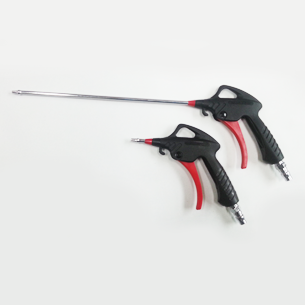
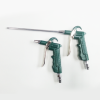
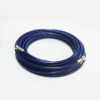
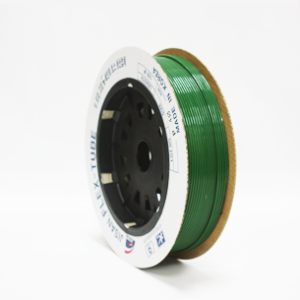
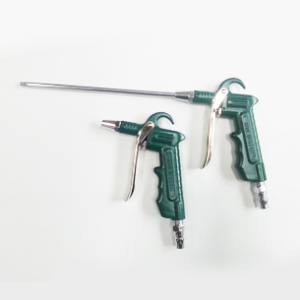
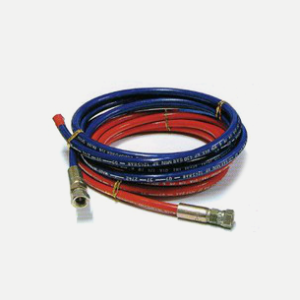
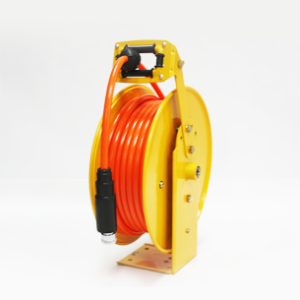
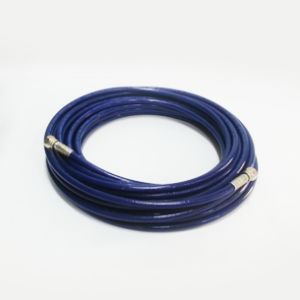
Reviews
There are no reviews yet.